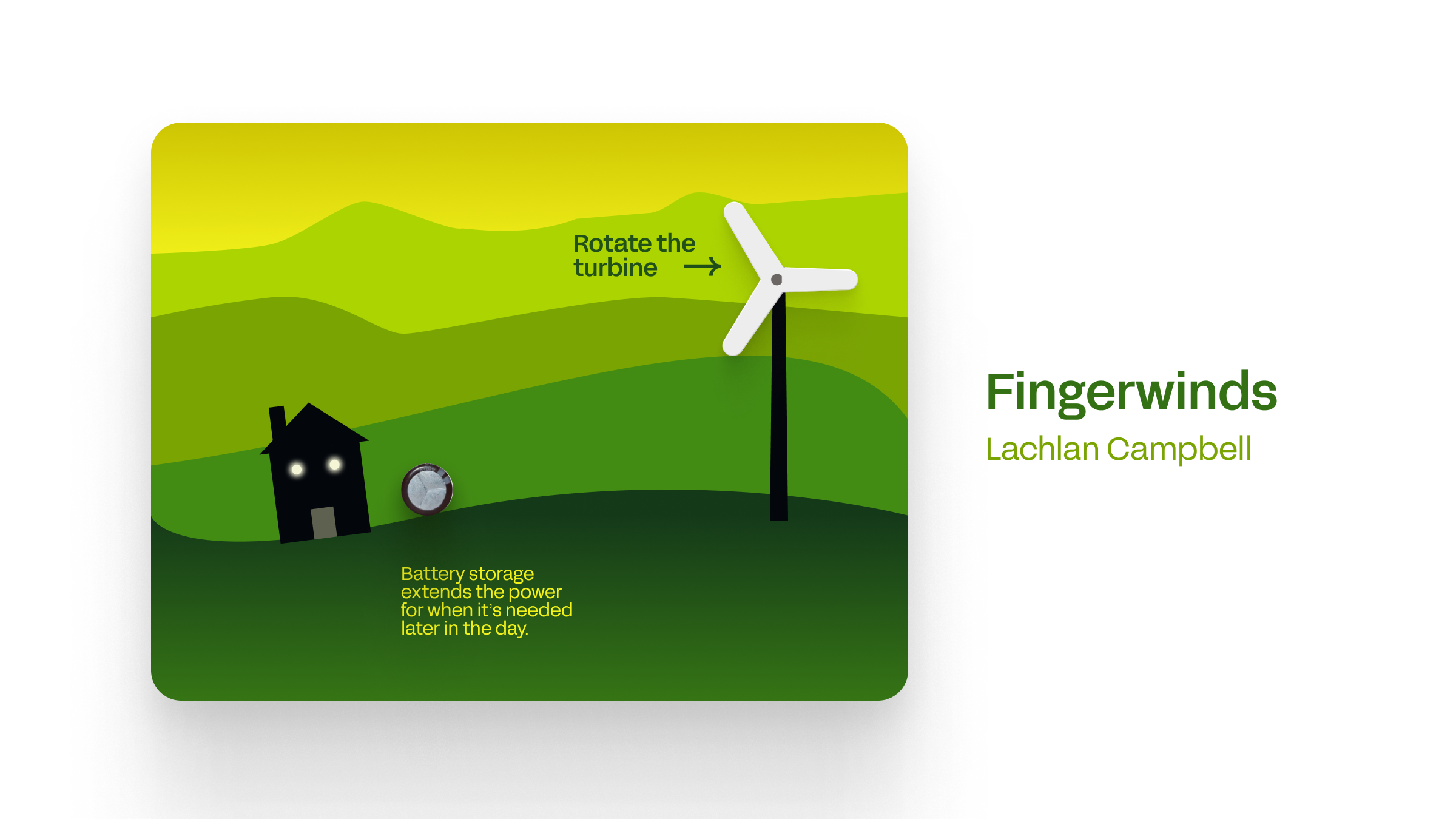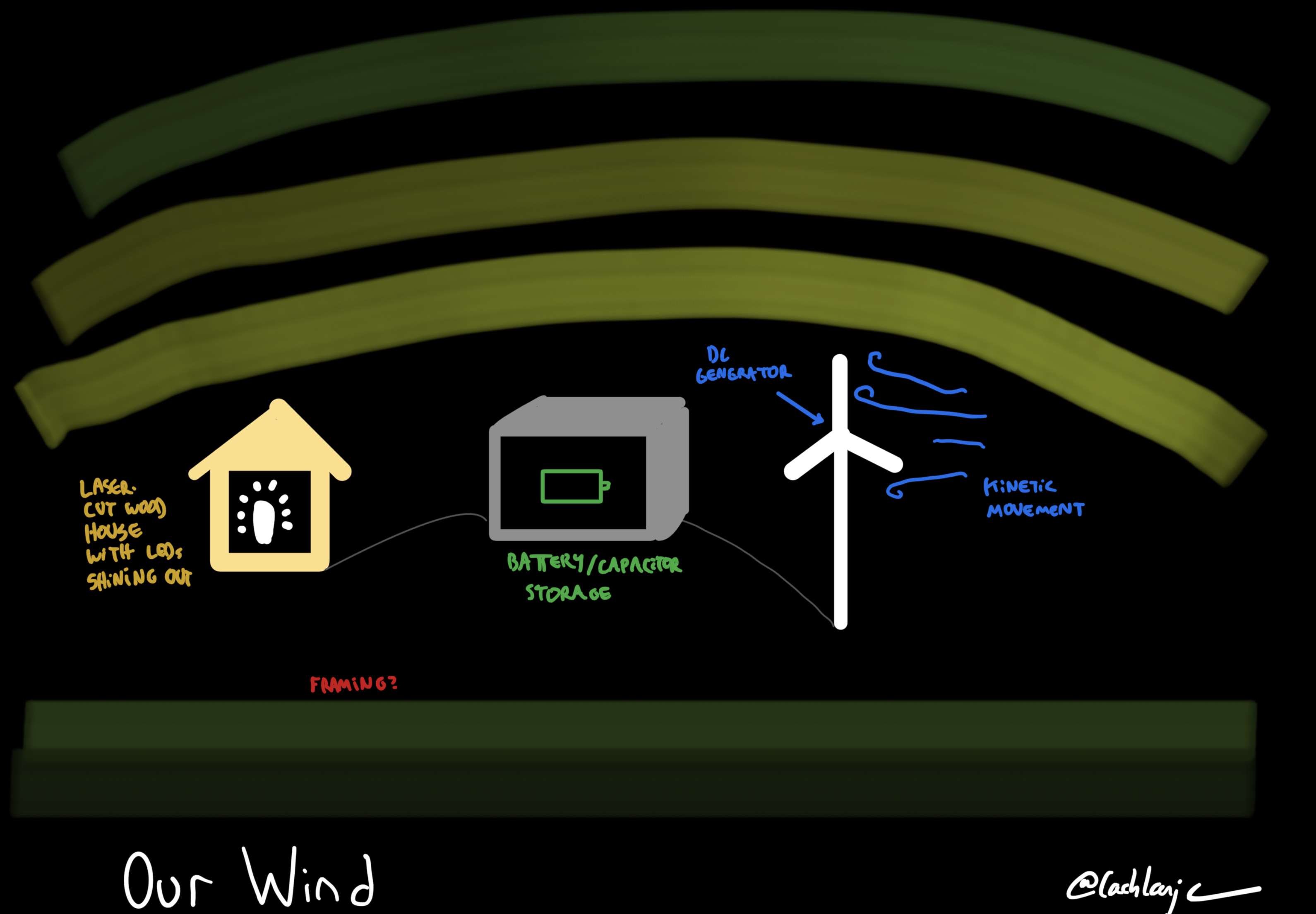Kinetic energy project

Inspired by an interactive experience from the Our Choice eBook from 2010, this installation lets you explore producing wind electricity yourself, and the role battery storage plays in a renewable grid.
Energy & power
- The stepper motor converts rotational kinetic energy to AC electricity. The full-bridge rectifier converts the AC power to DC. The capacitor stores this energy, allowing the LEDs to remain illuminated for a minute after the stepper motor stops being turned.
- Via measurement:
- Open circuit voltage: 20.3V
- Short circuit current: 35-40 mA
- Upper power bound: 0.73 W
- Via calculation:
- Initial voltage in the capacitor: 0.001 V
- Voltage in the capacitor when charged: 14.88 V
- Energy initially: 0 J
- Energy when charged: 1.107 J
- Duration of change: 18 sec
- Observed power: 0.0615 W
Process
My first idea for the project was to take the concepts shown in the UI and make them 3D, as a diorama:

I soon realized I couldn’t harvest enough power from the human breath to power this setup. With a small PC fan with side vents that could be blown into like a harmonica generating the voltage I needed, pivoted to a concept of building the iPad object itself with the fan built into the side, with the wiring inside the iPad.
Unfortunately, possibly in the mouthpiece sanitization process, the fan stopped producing the necessary voltage and output 1 meager volt. This left the portable iPad concept dead.
My final design took the screen out of the iPad, but switched from the blowing interaction I was imagining to propellor-styled handles on a stepper motor, allowing the audience to rotate the turbine themselves, see the house light up, then see the house remain illuminated for a full minute after the “wind” stops “blowing.”
3D printing
To make the handles, I 3D modeled & printed for the first time. Classmate Andrés linked me the stepper motor handle STL file he used, which I downloaded. Pulling it into Blender, using the pre-designed shaft and help from Vincent, I designed the propellors I was imagining.

With help from David in the shop, I printed the file from white PLA (40% infill), and hot-glued it to the stepper motor.